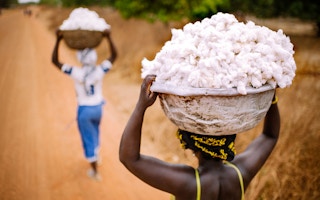The world’s major cotton producer and trader nations have agreed on strategies to boost collaborative research and spur scientific sharing and technology transfer to overcome challenges to the sustained growth of the global cotton industry.
Depleting water resources, new pest-related problems, an increasing frequency of intense droughts, floods, shifting weather and rainfall patterns are among key common challenges, according to experts and industry officials.
The agreement on joint measures to confront these threats to future growth was forged at a plenary meeting convened in Pakistan by the International Cotton Advisory Committee (ICAC) recently (30 October to 4 November).
Participants at the event gave the nod to synergising financial resources, expertise and efforts to cope with the challenges to what they referred to as “sustainability in the cotton value chain”.
“
We must rise above our respective national political agendas and strive to jointly reinvigorate the ailing global cotton sector.
Rafiq Chaudhry, ICAC
“Investment in cooperative R&D in water efficiency, seed, farm implements, improving techniques of cultivation, harvesting and postharvest processes are key to fight the challenges,” according to David Williams, agriculture counsellor at the US Embassy in Islamabad.
“The joint R&D initiatives are a must to roll out new cotton cultivation and production-specific technologies, discover high-yielding drought, flood, heat-tolerant and pest-resistant cotton varieties,” José Sette, ICAC executive director, stressed in his opening remarks to the meeting.
Founded in 1939, the Washington DC-based ICAC is composed of 30 cotton producing, consuming and trading countries. Present at the Islamabad conference were policymakers, government officials, private industry leaders and NGO experts.
Hashim Ahmed Alobeid, chair of the private enterprise Sudan Cotton, says ICAC and other multinational donor organisations like the Asian Development Bank, World Bank and international consortiums like CGIAR should join together to help frame and fund plans for the transfer of such proven coping strategies, technology transfer and technical know-how to other cotton growing countries.
Rafiq Chaudhry, cotton breeding and genetics scientist at ICAC, says that new affordable cultivation and harvesting technologies and using breeds resistant to weeds and insects could help lower the cost, improve farmers’ earnings and the sector’s competitiveness throughout the cotton value chain, he told the meeting.
Sikandar Hayat Khan Bosan, Pakistan’s federal minister of national food security and research, says collaboration is key. But so far it has remained “hostage to political conflicts or agendas among countries.
“We must rise above our respective national political agendas and strive to jointly reinvigorate the ailing global cotton sector,” he tells SciDev.net.
This article was originally published on SciDev.Net. Read the original article.

















